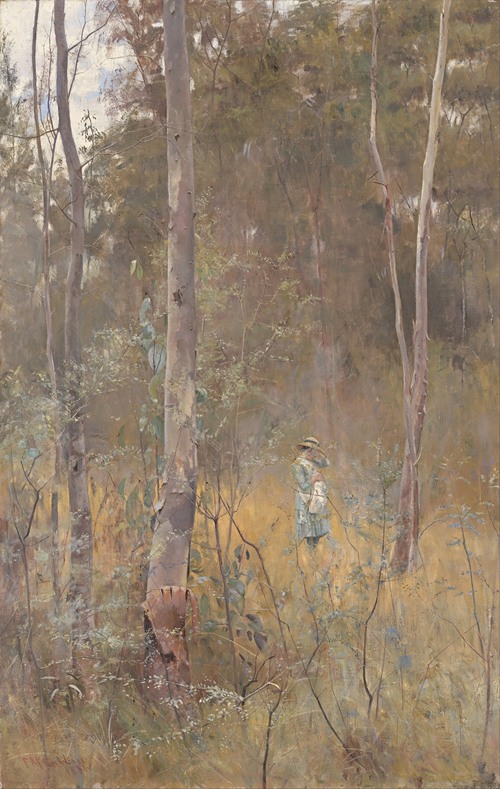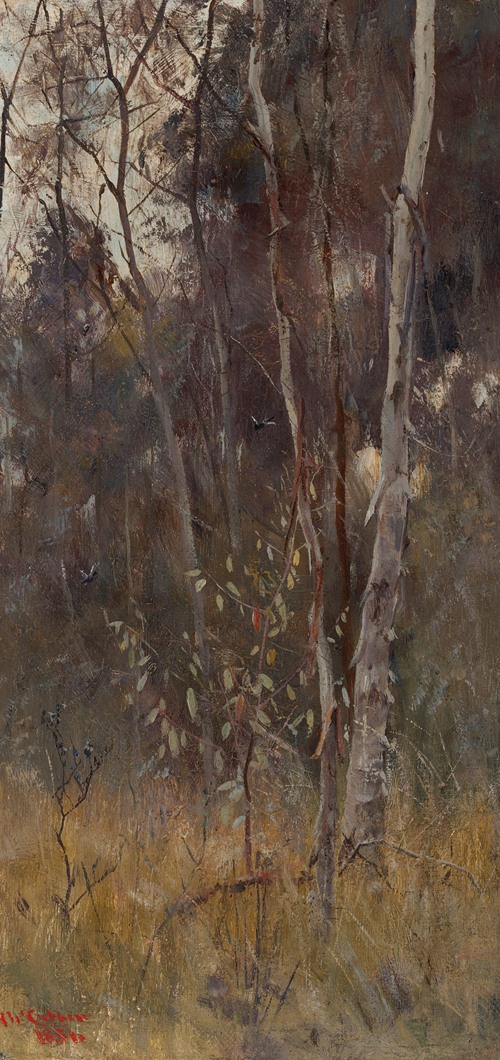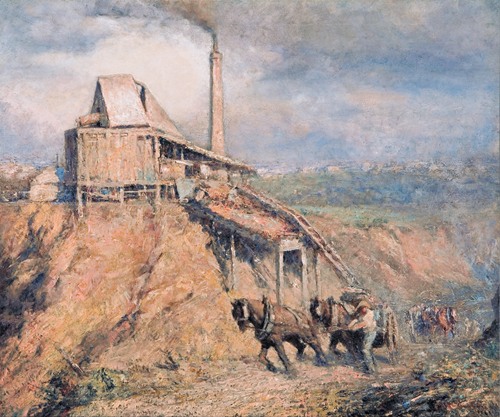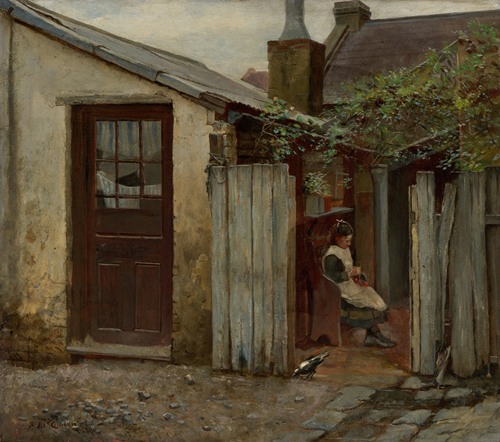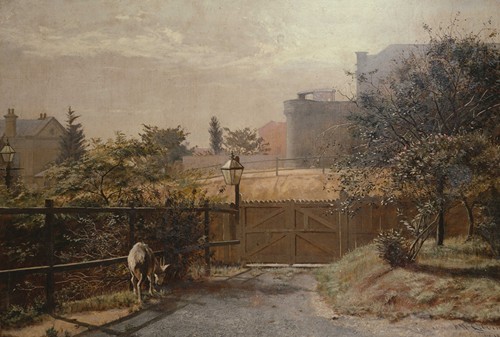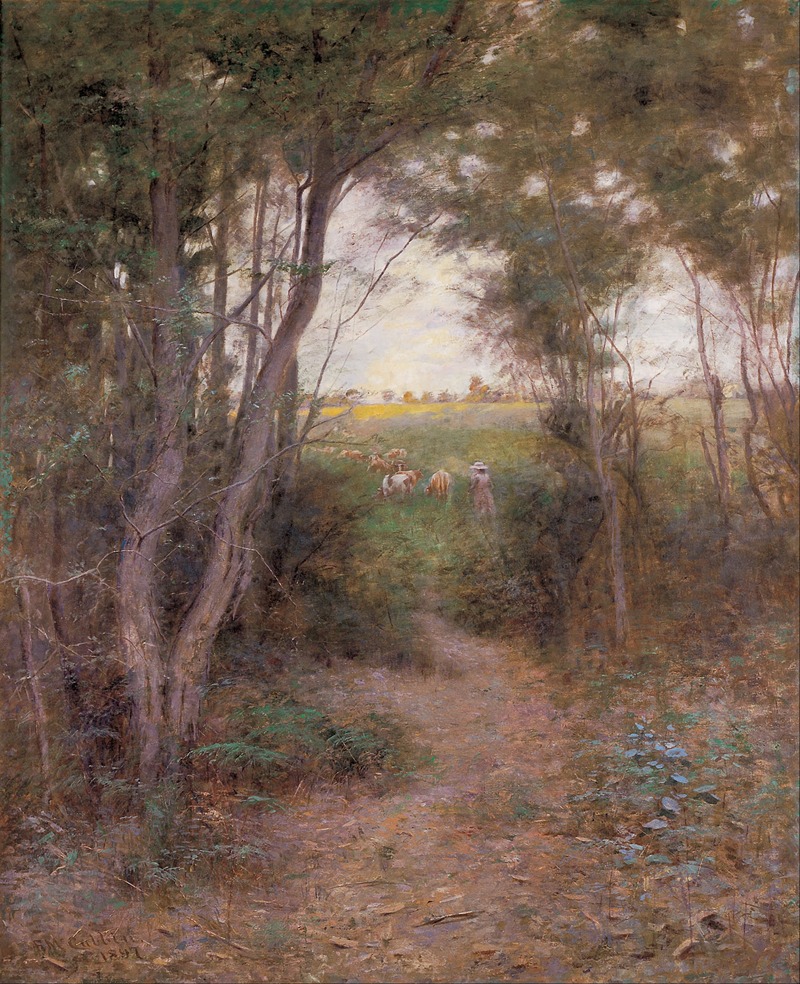
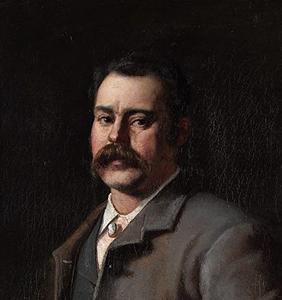
Frederick McCubbin was an Australian artist, art teacher and prominent member of the Heidelberg School art movement, also known as Australian impressionism.
Born and raised in Melbourne, Victoria, McCubbin studied at the National Gallery of Victoria Art School under a number of artists, notably Eugene von Guerard and later George Folingsby. One of his former classmates, Tom Roberts, returned from art training in Europe in 1885, and that summer they established the Box Hill artists' camp, where they were joined by Arthur Streeton and Charles Conder. These artists formed the nucleus of what became known as the Heidelberg School, a plein air art movement named after Heidelberg, the site of another one of their camps. During this time, he taught at the National Gallery school, and later served as president of both the Victorian Artists' Society and the Australian Art Association.
Concerned with capturing the national life of Australia, McCubbin produced a number of large landscapes that reflect the melancholic themes then popular in literary accounts of European settlers' interactions with the bush. Several of these works have become icons of Australian art, including Down on His Luck (1889), On the Wallaby Track (1896) and The Pioneer (1904).
During his first and only trip to Europe in 1907, McCubbin gained first-hand exposure to works by J. M. W. Turner and the French impressionists, inspiring a shift in his art towards freer, more abstracted brushwork and lighter colours. Works from this late period, although not as well known as his earlier national narratives, are considered by many critics to be his strongest artistically. "When he died", wrote Barry Pearce, "McCubbin was one of the very few Australian painters who found an exalted resolution of vision that progressed with age, so that some of his greatest paintings were made in the last ten years of his life."
McCubbin was born in Melbourne, the third of eight children of baker Alexander McCubbin (from Ayrshire, Scotland) and his English wife Anne, née McWilliams. McCubbin was educated at William Willmett's West Melbourne Common School and St Paul's School, Swanston Street. He later worked for a time as solicitor's clerk, a coach painter and in his family's bakery business while studying art at the National Gallery of Victoria's School of Design, where he met Tom Roberts and studied under Eugene von Guerard. He also studied at the Victorian Academy of the Arts and exhibited there in 1876 and again from 1879 to 1882, selling his first painting in 1880. In this period, after the death of his father, he became responsible for running the family business.
By the early 1880s, McCubbin's work began to attract considerable attention and won a number of prizes from the National Gallery, including a first prize in 1883 in their annual student exhibition. By the mid-1880s he concentrated more on painting the Australian bush, the works for which he became notable.
In 1883, McCubbin received first prize in the first annual Gallery students' exhibition, for best studies in colour and drawing. In 1888, he became instructor and master of the School of Design at the National Gallery. In this position he taught a number of students who themselves became prominent Australian artists, including Charles Conder and Arthur Streeton.
McCubbin was exhibiting and perhaps painting in the studio of his friend Tom Roberts in the Grosvenor Chambers in Collins St by May 1888. His son, Louis, would later have a studio in the same building.
McCubbin married Annie Moriarty in March 1889. They had seven children, of whom their son Louis McCubbin became an artist and director of the Art Gallery of South Australia 1936–1950. A grandson, Charles, also became an artist.
In 1901 McCubbin and his family moved to Mount Macedon, transporting a prefabricated English style home up onto the northern slopes of the mountain which they named Fontainebleau. It was in this beautiful setting, in 1904, that he painted The Pioneer, amongst many other works, and this is the only place that McCubbin ever painted fairies. The house survived the Ash Wednesday fires and stands today as a testament to the artist. It was at Macedon that he was inspired by the surrounding bush to experiment with the light and its effects on colour in nature.
McCubbin continued to paint through the first two decades of the 20th century, though by the beginning of World War I his health began to fail. He traveled to England in 1907 and visited Tasmania, but aside from these relatively short excursions lived most of his life in Melbourne. There he taught at the National Gallery of Victoria Art School, where his students included painter Hilda Rix Nicholas and the photographer Ruth Hollick.
In 1912 he became the founding member of the Australian Art Association.
McCubbin died in 1917 from a heart attack.
